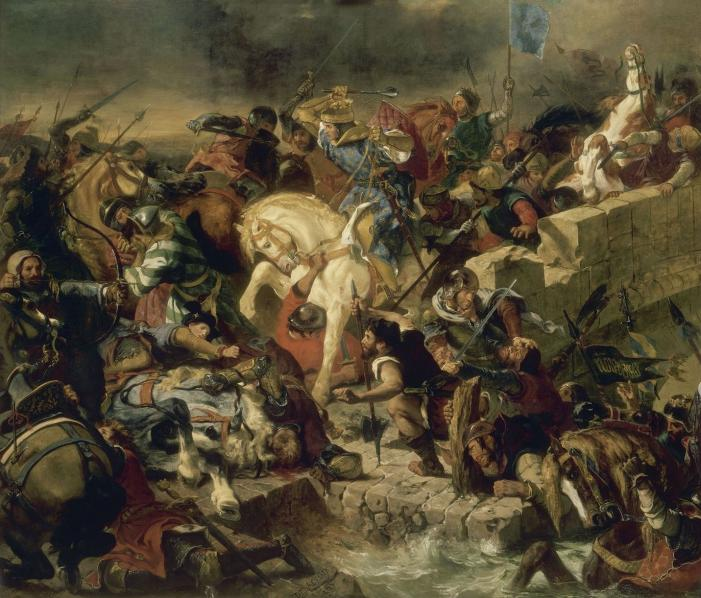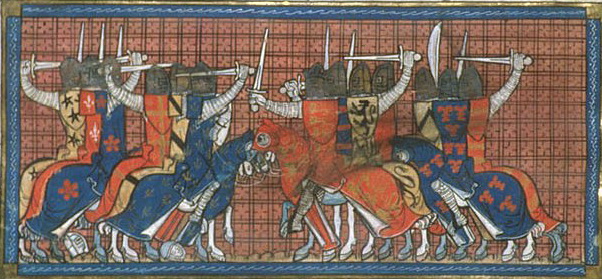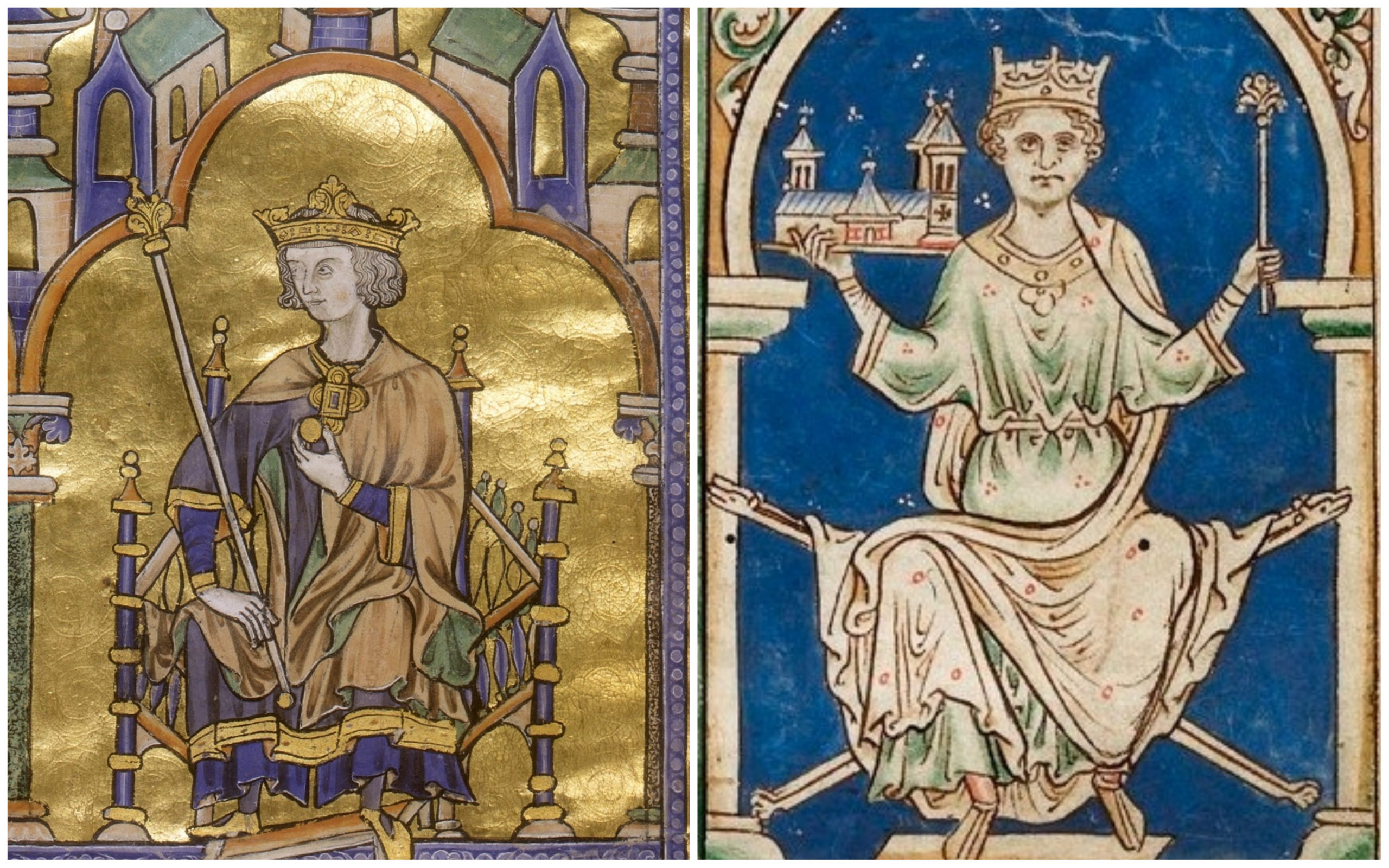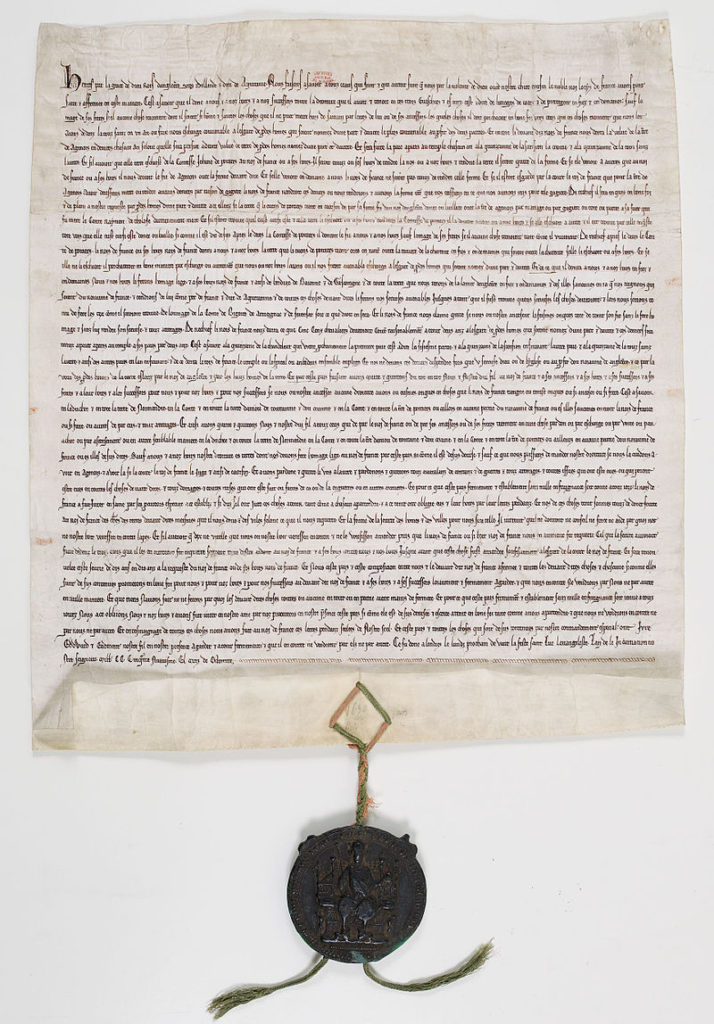On the 21st of July, 1242, the Battle of Taillebourg happened. It was a decisive battle during the Saintonge War that lasted between 1242 and 1243. The Capetian forces were confronted by Hugh X of Lusignan (second husband of Isabella d’Angoulême, Henry III of England’s mother), Raymond VII of Toulouse, and King Henry III of England.
The English ruler’s aim was to try and regain some of the lost Angevin lands on the continent. Saintonge is the region around Saintes in the centre-west of France, where most of the fighting took place. The formal reason for the beginning of the war was the displeasure of Poitevin vassals with the decision of Saint Louis who invested his younger brother, Alphonse, with the title of Count of Poitou according to the will of Louis VIII, while they preferred the English monarch’s brother, Richard of Cornwall (King John’s second son and brother to Henry III), to have this title.

The battle took place on the bridge built over the Charente River and was also fought near Saintes. The King of France and his brother, the Count of Poitiers, occupied in Château de Taillebourg, overlooking the Charente River, whereas the monarch of England and Hugh de Lusignan gathered their allied armies on the opposite side of the river. The English resolved to take the bridge and launched an attack on the French positions, and in response the French cavalry sallied forth from the fortress, catching Henry III and Lusignan’s men off guard, forcing them to flee to the nearby city of Saintes. Henry and Hugh then escaped to Gascony, leaving their army leaderless, and it was not difficult for the French forces to defeat their rivals near Saintes, although the second engagement was quite long, but the English were beaten in the end.
Louis and Alphonse pursued the English troops and took many prisoners. They besieged Saintes, and shortly the city capitulated. At the same time, Henry organized the blockade of La Rochelle by sea to prevent the complete takeover of Aquitaine and Gasgony, but it didn’t help his cause. It is known that in January 1243, Henry lamented in his letter to Frederick II, Holy Roman Emperor (he previously wanted to form an alliance with him against France) that he no longer hoped to restore the former Angevin possessions to the House of Plantagenet.
Henry III of England would sign a peace treaty with Louis IX of France soon at Pons, on the 1st of August, 1242. Years later, amidst the threat of a second Baron’s war in England, Henry and Louise would ultimately reconcile signing another treaty in Paris on the 4th of December 1259. As a gesture of friendship, Louis would restore Guyenne to Henry to guarantee peace that would allow him to channel all his energy into the Seventh Crusade. Hugh X de Lusignan would lose everything: he would be deprived of all his possessions, castles, and lands, which would be sold by Alphonse. Lusignan would die in Angoulême in disgrace in 1249.
All images are in the public domain.
Text © 2020 Olivia Longueville







